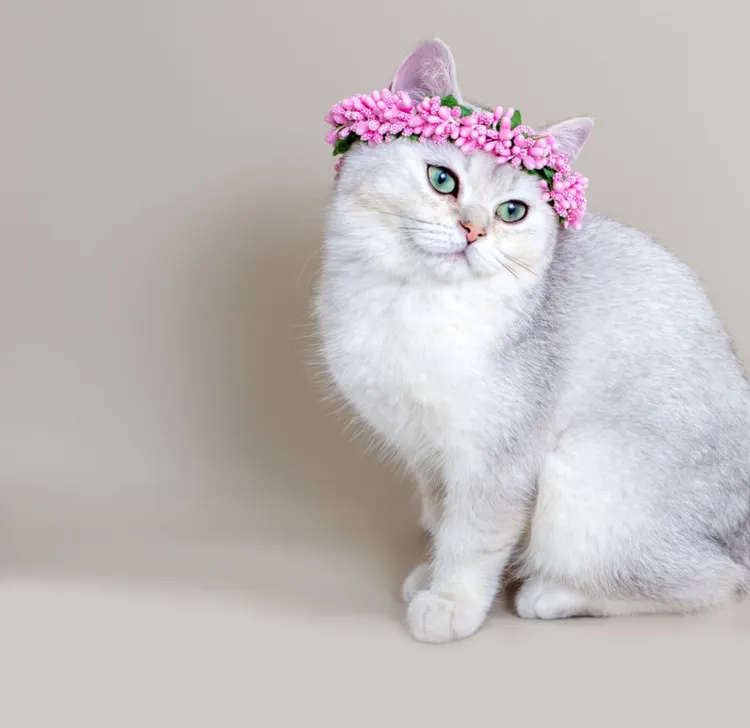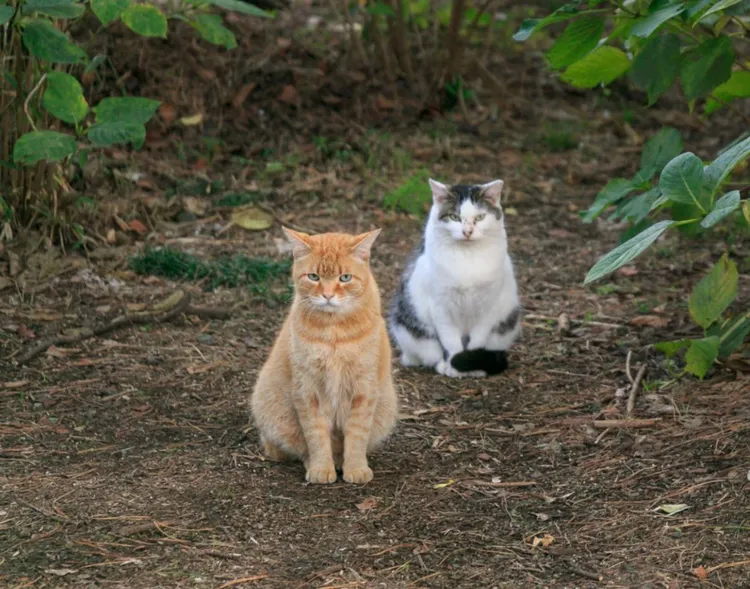Ever looked at a cat and wondered, “Is this a charming gentleman or a graceful lady?” Don’t worry—you’re not the only one scratching your head! Cats can be mysterious, and while their personalities may be telling, it’s not always easy to tell their gender at a glance. Luckily, there are some reliable ways to tell the difference between male and female cats without getting too personal. Let’s dive into some easy-to-follow methods to help you identify your cat’s gender by observing their physical traits, behavior, and coat colors.
Physical Differences Beyond Genitals
If you’d prefer not to inspect a cat’s genitals, there are several other physical characteristics you can observe to help determine their gender.
1. Size and Build
One of the most noticeable physical differences between male and female cats is size. Male cats tend to be slightly larger and more muscular than their female counterparts. This is especially true for cats that have not been neutered. Here are some common traits:
- Male Cats: Often have a broader chest, larger paws, and a generally more muscular build. Unneutered males, in particular, may appear stockier due to their hormones.
- Female Cats: Tend to have a more petite and slender appearance, with smaller paws and a more delicate frame.
While this size difference isn’t always drastic, if you see a particularly big, muscular cat, it’s likely a male.
2. Face Shape
The shape of a cat’s face can also offer clues about its gender. Although this isn’t a foolproof method, it’s one that can be helpful, especially if the cat is unneutered.
- Male Cats: Generally have a rounder, broader face. Unneutered males develop more prominent jowls due to increased testosterone, which gives them a more “rugged” appearance.
- Female Cats: Typically have a more angular and narrow face. Their overall facial structure may appear softer and more delicate.
The more prominent face shape of males is usually most noticeable in adult cats, particularly those that haven’t been neutered.
Behavioral Cues
Cats’ behavior can also provide insights into their gender, though it’s important to remember that individual personalities vary widely.
1. Territorial Behavior
Male cats, especially those that are not neutered, are known for their territorial tendencies.
- Male Cats: May mark their territory by spraying or urinating on vertical surfaces. This is most common in unneutered males, as spraying is a way for them to mark their domain and ward off other males.
- Female Cats: Spayed females are typically less territorial than males and are less likely to exhibit marking behaviors. However, unspayed females in heat may occasionally display similar territorial behaviors.
If you notice a cat exhibiting territorial behavior, it’s a good indicator that the cat might be male.
2. Activity Levels and Playfulness
There are some common behavioral patterns associated with male and female cats, though they can overlap depending on the individual cat’s personality.
- Male Cats: Often more active, playful, and prone to roughhousing. They may enjoy interactive play with their owners and other pets, sometimes engaging in more rambunctious behavior.
- Female Cats: While females can be just as active as males, they’re often seen as more nurturing and calm, particularly after they’ve been spayed.
Remember, these behaviors are just generalizations, and individual cats can break the mold!
Social Interactions
When it comes to social behavior, some people believe there are noticeable differences between male and female cats.
1. Cuddly vs. Independent
Though every cat is unique, many owners have observed that male and female cats often have slightly different social tendencies.
- Male Cats: Generally considered more affectionate and social. They tend to enjoy being around their owners, seeking out attention and cuddles more frequently.
- Female Cats: Often seen as more independent, especially when they want some alone time. However, females can also be very affectionate, particularly with their chosen person.
These tendencies can offer some clues when trying to determine the gender of a cat, but remember, all cats have their own personalities.
2. Attention-Seeking Behavior
Male cats, particularly neutered males, are sometimes more outgoing and attention-seeking compared to females.
- Male Cats: May enjoy being the center of attention and actively seek out interaction from their owners. They might follow you around the house or demand petting by head-butting or rubbing against you.
- Female Cats: Tend to be a bit more reserved, although they can still be affectionate. Female cats may be more selective about when they want attention.

Coat Color as an Indicator
Interestingly, a cat’s coat color can sometimes provide strong hints about its gender due to genetics.
1. Tortoiseshell and Calico Cats
If you encounter a tortoiseshell or calico cat, there’s a high chance it’s female.
- Genetics of Coat Colors: Tortoiseshell (black, orange, and cream) and calico (white, black, and orange) coat patterns are linked to the X chromosome. Because females have two X chromosomes, they can express both colors, while males (who have one X and one Y chromosome) generally cannot.
- Exception to the Rule: Male tortoiseshell or calico cats are extremely rare and often have genetic anomalies such as an extra X chromosome (XXY).
So, if you see a tortie or calico, it’s most likely a girl!
2. Orange and Ginger Cats
On the flip side, orange or ginger cats are much more likely to be male.
- 80% Male: Around 80% of orange tabby cats are male. This is because the gene for orange coloring is also found on the X chromosome. A male cat only needs one copy of the gene to be orange, while a female needs two.
While not definitive, coat color can be a helpful indicator when identifying a cat’s gender.
Vocalization Patterns
Though it’s not a hard-and-fast rule, some owners believe that male and female cats have different vocalization patterns.
- Male Cats: Tend to be more vocal, especially when they want attention. They may meow or yowl frequently to engage with their owners.
- Female Cats: Often quieter, though unspayed females may vocalize loudly when they’re in heat to attract mates.
By paying attention to how a cat vocalizes, you may be able to pick up on some gender-based tendencies.

Summary and Final Thoughts
While it may not be immediately obvious whether a cat is male or female, by paying attention to physical characteristics, behavior, coat color, and even vocalization patterns, you can often make an educated guess. Male cats tend to be larger, more affectionate, and territorial, while females are typically more petite, independent, and nurturing. Of course, there are always exceptions, so it’s important to get to know your cat’s unique personality and traits. By using eco-friendly practices in your cat care routine, you can also ensure that you’re helping both your pet and the planet.



